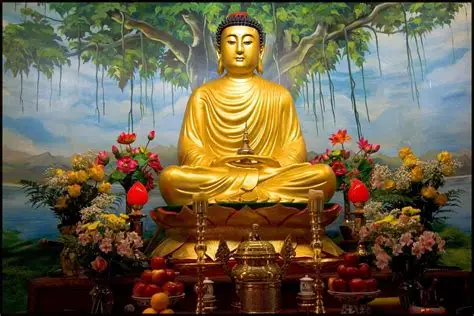
India is home to some of the most serene and spiritually rich destinations in the world—and Buddhist Monasteries in India are at the heart of this legacy. These sacred spaces, nestled in mountains, forests, and historic towns, offer travelers a chance to experience mindfulness, architecture, and centuries-old traditions. Whether you’re a spiritual seeker, a cultural explorer, or a curious wanderer, these monasteries promise a journey into tranquility and timeless wisdom.
🧘♂️ Why Visit Buddhist Monasteries in India?
Buddhist Monasteries in India are more than places of worship—they’re living centers of learning, meditation, and community. They preserve the teachings of Gautam Buddha and reflect the diversity of Buddhist traditions, including Theravada, Mahayana, and Vajrayana.
Visitors can expect:
- Peaceful environments ideal for reflection
- Monastic rituals and chanting sessions
- Stunning architecture and murals
- Opportunities to interact with monks and nuns
- Cultural immersion through festivals and retreats
Whether you’re meditating in a Himalayan gompa or exploring ancient ruins in Bihar, every monastery offers a unique experience.
🏞️ Top Buddhist Monasteries in India
Here’s a curated list of the most iconic and spiritually significant Buddhist monasteries across India:
1. Hemis Monastery, Ladakh
- Location: Hemis, near Leh
- Highlights: Largest and wealthiest monastery in Ladakh, known for the Hemis Festival and vibrant thangka paintings.
- Experience: Attend masked dances, explore ancient scriptures, and enjoy panoramic mountain views.
2. Tawang Monastery, Arunachal Pradesh
- Location: Tawang town
- Highlights: India’s largest monastery and second-largest in Asia, belonging to the Gelugpa sect of Tibetan Buddhism.
- Experience: Witness morning prayers, explore the library, and enjoy views of the Tawang Valley.
3. Rumtek Monastery, Sikkim
- Location: Near Gangtok
- Highlights: Seat of the Karmapa of the Kagyu sect, known for its golden stupa and vibrant prayer halls.
- Experience: Attend teachings, explore Tibetan art, and walk through peaceful gardens.
4. Namdroling Monastery (Golden Temple), Karnataka
- Location: Bylakuppe, near Mysore
- Highlights: Largest teaching center of the Nyingma lineage in South India, famous for its golden statues and murals.
- Experience: Participate in prayer sessions, shop for Tibetan crafts, and enjoy vegetarian meals.
5. Thiksey Monastery, Ladakh
- Location: Near Leh
- Highlights: A 12-story complex resembling the Potala Palace in Lhasa, with a giant Maitreya Buddha statue.
- Experience: Attend morning prayers, explore meditation halls, and enjoy sunrise views.
6. Mindrolling Monastery, Dehradun
- Location: Clement Town, Dehradun
- Highlights: One of the largest Buddhist centers in India, known for its stupa, gardens, and peaceful ambiance.
- Experience: Ideal for quiet retreats and spiritual study.
7. Ghoom Monastery, West Bengal
- Location: Near Darjeeling
- Highlights: Oldest Tibetan Buddhist monastery in Darjeeling, home to a 15-foot statue of Maitreya Buddha.
- Experience: Explore ancient manuscripts and enjoy misty mountain views.
8. Alchi Monastery, Ladakh
- Location: Alchi village, Ladakh
- Highlights: Known for its Indo-Tibetan art and 11th-century murals.
- Experience: A quiet, non-monastic site ideal for art lovers and history buffs.
9. Phugtal Monastery, Zanskar Valley
- Location: Remote cave monastery in Ladakh
- Highlights: Built into a cliffside, accessible only by trek.
- Experience: A raw, immersive spiritual experience for adventure seekers.
10. Diskit Monastery, Nubra Valley
- Location: Nubra Valley, Ladakh
- Highlights: Home to a towering Maitreya Buddha statue overlooking the valley.
- Experience: Combine spiritual exploration with desert landscapes.
Sources: StudyIQ, TravelTriangle, The Indian Architecture
🛕 Architecture and Design
Buddhist Monasteries in India showcase a fusion of Indian, Tibetan, and Nepalese architectural styles. Common features include:
- Stupas: Dome-shaped structures symbolizing enlightenment
- Prayer Wheels: Spinning wheels inscribed with mantras
- Thangkas: Painted scrolls depicting deities and teachings
- Meditation Halls: Spaces for silent reflection and group chanting
- Monastic Quarters: Living spaces for monks and nuns
Each monastery is designed to inspire peace, focus, and spiritual growth.
🧘♀️ Spiritual Activities and Retreats
Many monasteries offer:
- Meditation Retreats: Ranging from a few days to several weeks
- Teachings and Discourses: Led by senior monks and Rinpoches
- Volunteer Opportunities: Help with monastery upkeep or community service
- Festivals and Rituals: Attend events like Losar, Hemis Festival, and Buddha Purnima
These experiences are ideal for travelers seeking inner clarity and cultural immersion.
📅 Best Time to Visit
- Spring (March–May): Pleasant weather and blooming landscapes
- Summer (June–August): Ideal for high-altitude monasteries in Ladakh and Sikkim
- Autumn (September–November): Clear skies and vibrant festivals
- Winter (December–February): Peaceful retreats in southern monasteries
Always check local weather and festival calendars before planning.
🧳 Travel Tips
- Dress modestly and carry a shawl for temple visits
- Respect silence zones and photography rules
- Avoid pointing feet toward statues or monks
- Carry reusable bottles and avoid plastic
- Learn basic chants or mantras for deeper engagement
Final Thoughts
Buddhist Monasteries in India are sanctuaries of peace, wisdom, and timeless beauty. Whether you’re meditating in a Himalayan gompa, exploring ancient murals in Alchi, or attending teachings in Bylakuppe, every moment feels sacred. With curated itineraries, spiritual depth, and cultural richness, these monasteries promise a journey that nourishes both the soul and the senses.